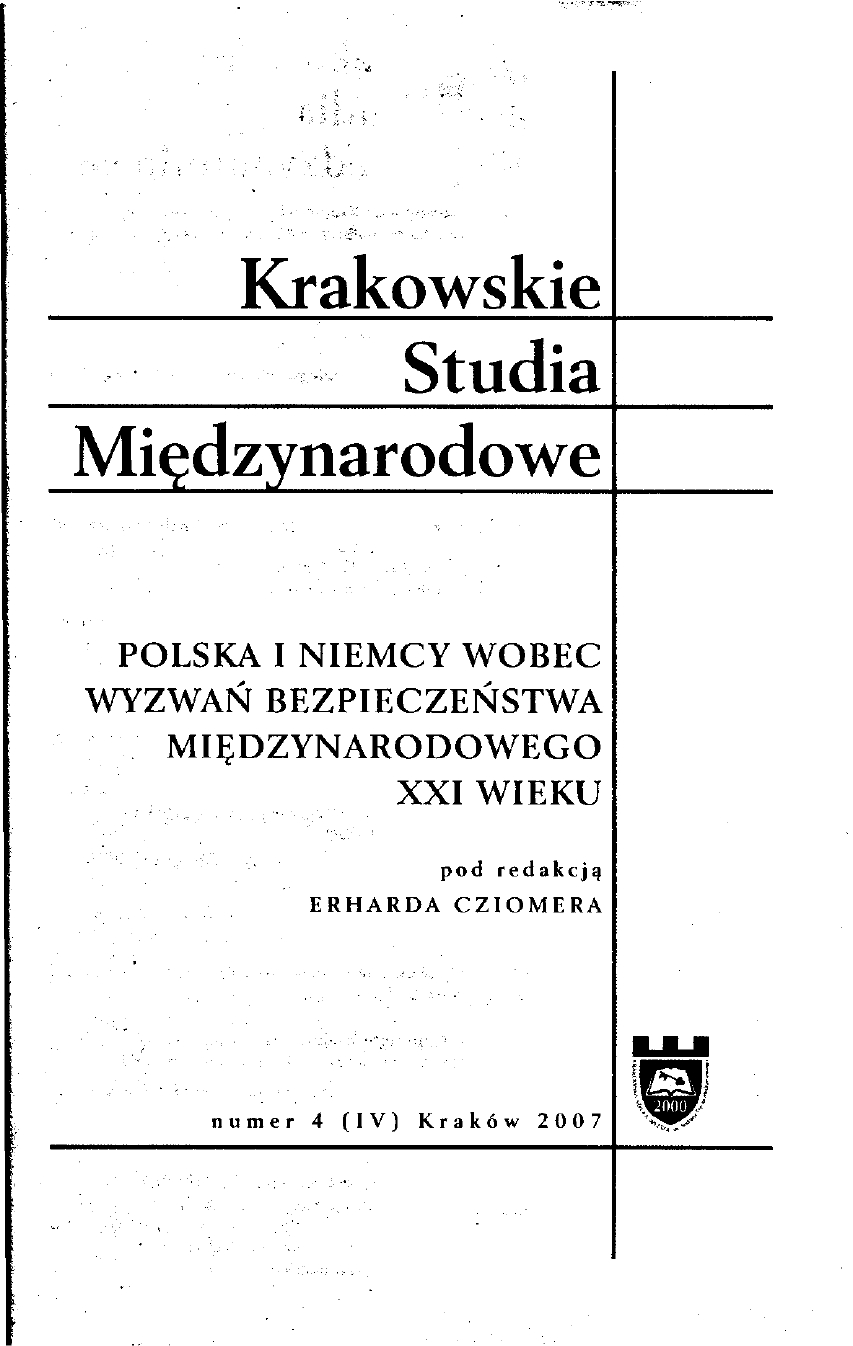Otoczenie Polski i Niemiec w kontekście polityki bezpieczeństwa w XXI wieku
The security environment for Poland and Germany in the 21st Century
Author(s): Hans Martin SiegSubject(s): International relations/trade, Security and defense
Published by: Oficyna Wydawnicza AFM Uniwersytetu Andrzeja Frycza Modrzewskiego w Krakowie
Summary/Abstract: Since the end of the Cold War, Poland and Germany have had to face a fundamental change in security challenges, resulting less from an altered distribution of world power - with China and Russia emerging as potential future competitors - than from a change in conflict paradigms themselves. Instead of confrontations based on the amassing of military force, which shaped the prevailing security threats of the past, asymmetric risks are increasingly gaining importance. The main reason for this development is the increasingly and disproportionally high impact that comparatively weak actors can exert today on adversaries superior both in quantity and quality of means, due to achievements in weapons and communication technologies, infrastructure and mobility. Incidents of modern terrorism, and the even graver dangers presented by weapons of mass destruction, represent only the most extreme examples of this development. It is also one reason behind the difficulties US troops face controlling Iraq. Today, and in the future, it is and will be much easier to obtain the power reąuired to become a threat to others than the power needed to defend oneself, to guarantee security or to exercise control. In case of conflict, such a status quo benefits not the stronger actor but the more aggressive one. Yet all over the developed world, post-heroic societies have evolved with low tolerance limits regarding their willingness both to use force and to suffer casualties. This aversion to violence and losses is the single most important reason for both stability of societies and their vulnerability to asymmetric threats and their difficulties in addressing them. As the access to destructive potential broadens, increasingly smaller groups of people are able to obtain the means to become a threat or to endanger the stability of whole states or societies. Because of this, internal and external security are increasingly merging. Nowadays, security depends to a lesser extent on military or police forces than on the stability of Western and non-Westem societies. In such a world, Western states will either export stability or import instability. The most important front line of security policy in future will not be located between the great centres of power. It will instead divide the developed world, increasingly shaped by integration and connectivity, from the world o f dy sfiinctional states or societies held together or tom apart by the use of either repressive or destructive violence often dealt out by small but thuggish minorities. Today’s security environment of European states can be divided into three different zones. In the first, almost synonymous with membership of the OECD, war has ceased to be an option. In the second, politics of power, even in a military sense including the risk of escalation, remains part and parcel of inter-state relations, with Russia and Iran being the most notable examples for Europeans. The third zone is shaped by political, social, and economic dysfunctionalities, from which intra- and trans-national (rather than intemational) conflict scenarios originate. European integration together with the past and futurę enlargement processes of the EU have spread stability across the continent. Yet, beyond the current and futurę borders of the EU, Germany - and Poland in many respects still need to develop a coherent security policy. With particular regard to relations with Russia, the policies of the two countries have altemated between cooperation and confrontation, effectively signalling alienation as well as a lack o f unity and determination at the same time. Both nations need to develop a strategy of engagement that ignores neither Russian perceptions of national interest and security nor the resultant differences in domestic and European interests. Geopolitics still remains a factor of security policy, especially for Poland, whose location on the extemal border of the EU, directly adjacent to Belarus, Ukrainę, and Russia gives rise to particular concern. In general, new threats are globalizing and result in challenges that affect all European states and can only be addressed jointly. With security depending increasingly on intra-societal developments rather than military power, security policy needs to follow a broad approach under which only civilian progress can ensure lasting success, while military deployments merely fulfil sub-strategic functions of safeguarding civilian efforts by keeping or enforcing peace. Yet this also requires that security policy, including its military elements, be more actively pursued. This is why the European security strategy calls for a “strategie culture that fosters early, rapid, and when necessaiy, robust intervention”. It is in this respect that the security policies of Poland and Germany demonstrate their largest deflciencies. Both countries agree, however, that the transatlantic alliance remains the primary guarantor of their security. Concems that the ESDP could develop into a competitor to NATO proved to be unfounded, simply due to lack of capabilities. However, the expansion of the Common European Security and Defence Policy (CESDP) should serve securing the ability to act collectively in cases in which the USA or NATO as a whole are not willing to intervene. As NATO will presumably not play a strong political role in the futurę, but rather primarily confine itself to its function as a defensive league, the expansion of the CESDP will also represent an altemative to a strong national alignment of the foreign and security policies of individual European nations, including Germany. Participation in this policy is also in Poland’s interest. Despite some historical frustrations, conditions are favourable for a constructive German-Polish collaboration both within NATO and the EU.
Journal: Krakowskie Studia Międzynarodowe
- Issue Year: IV/2007
- Issue No: 4
- Page Range: 151-170
- Page Count: 20
- Language: Polish

